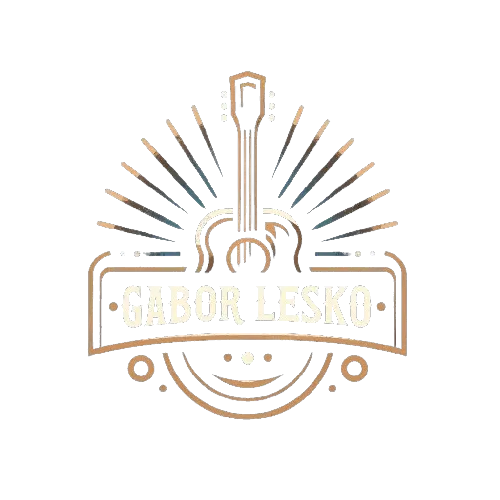Different kinds of guitars
Guitars are more than just musical instruments, they represent a whole world of sounds, playing styles and stories. From the elegant classical Spanish guitar to the power-hungry electric guitar, each one brings something unique to the musical landscape. No matter your skill level, there is always something in the world of guitars that will catch your attention and inspire you to new musical heights.
Classical Guitar
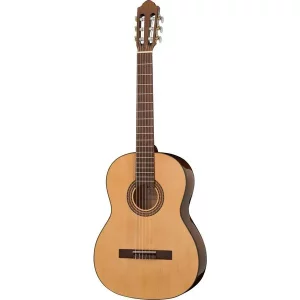
The classical guitar is not just an instrument, but a universe full of rich sounds and multifaceted melodies. Its history dates back to ancient times, and the enchanting melodies created by skillful hands conquer hearts all over the world.
Genres for classical guitar
The classical guitar is in demand in many genres:
- Classical music: Bach, Mozart, Vivaldi and other composers have created many works for the classical guitar.
- Flamenco: The fiery rhythms and passionate melodies of this genre are unthinkable without the guitar.
- Brazilian music: Bossa nova, samba and shoro are ideal for classical guitar.
- Jazz: Improvisations on the classical guitar are mesmerizing in their virtuosity.
- Pop music: Many popular songs sound even better when arranged for classical guitar.
- Songwriting: Guitar accompaniment brings soulful poems and songs to life.
Classical Guitar Sizes
- 4/4: Full size guitar for adults and children from 12 years old.
- 3/4: A smaller guitar for children ages 8-11.
- 1/2: Compact guitar for children ages 5-7.
- 7/8: Intermediate size for children 10-12 years old or adults with short stature.
Features of the classical guitar
- Nylon strings: Soft, singable sound and finger comfort.
- Wide fingerboard: Comfortable for difficult chords.
- No fret: Smooth pitch change.
- Rosette: Decorative hole on the deck.
Resonator guitar
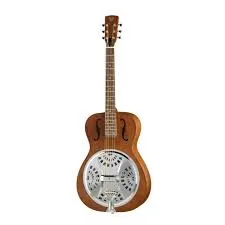
The resonator guitar is an instrument primarily associated with the blues, but is in demand in other genres as well.
Genres for the resonator guitar
- Blues: Perfect for expressing bluesy yearning.
- Country: Cowboy songs and ballads take on a special charm.
- Folk Rock: Used to create spectacular solos and riffs.
- Hawaiian music: Slide parts are unthinkable without a resonator guitar.
- Bluegrass: Adds drive and expression.
Resonator guitar sizes
- 4/4: Full size guitar.
- 3/4: A smaller guitar.
- 1/2: Compact guitar.
Resonator Guitar Features
- Metal body: Provides a loud, ringing sound.
- Cone-shaped resonator: Enhances the sound and adds richness.
- Short fingerboard: Convenient for slide technique.
- Fret markers: Simplifies playing.
Electroacoustic guitar
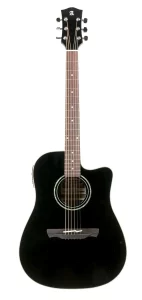
The electroacoustic guitar combines the features of classical and electric guitars.
Genres for the electroacoustic guitar
- Folk: A new sound for folk songs.
- Blues: Provides a rich sound.
- Rock: Perfect for acoustic versions of songs.
- Country: Perfectly complements other instruments.
- Pop: Often used by popular artists.
Electric Acoustic Guitar Sizes
- 4/4: Full size guitar.
- 3/4: A smaller guitar.
- 1/2: Compact guitar.
- 7/8: Intermediate size.
Features of an electroacoustic guitar
- Nylon or steel strings: Choice depends on preference.
- Diaphragm: Converts string vibrations into an electrical signal.
- Preamp: Amplifies and processes the signal.
Guitars with hollow or semi-hollow bodies
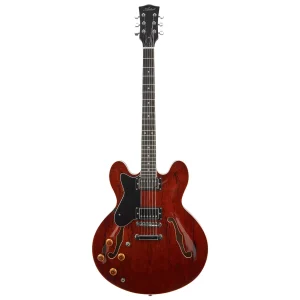
Genres for hollow body or hollow body guitars include
- Jazz: Provide softness and dynamics.
- Blues: Expressive timbre for blues compositions.
- Rock and Roll: Classic rock and roll hits.
- Indie Rock: Creates atmospheric sounds.
- Pop: Often used by pop singers.
Sizes of guitars with hollow or semi-hollow bodies
- 4/4: Full-size guitar.
- 3/4: A smaller guitar.
- 1/2: Compact guitar.
Features of guitars with hollow or hollow body
- Hollow or hollow body: Made of wood.
- Nylon or steel strings: Choice depends on preference.
- Sounders: Magnetic pickups.
Electric guitar
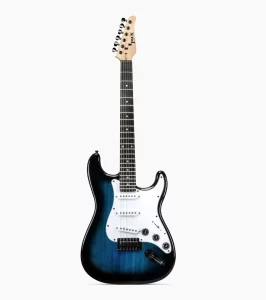
The electric guitar is a symbol of rebellion and rock and roll freedom.
Genres for electric guitar
- Rock: The heart and soul of rock music.
- Blues: Able to convey deep emotions.
- Jazz: Creates atmospheric riffs and improvisations.
- Pop: Adds drive and energy.
- Country: Creates accompaniment.
Electric Guitar Sizes
- 4/4: Full-size guitar.
- 3/4: A smaller guitar.
- 1/2: Compact guitar.
Electric Guitar Features
- Solid body: Made of solid wood.
- Steel strings: Provides a bright sound.
- Sounders: Magnetic and piezo pickups.
Bass Guitar
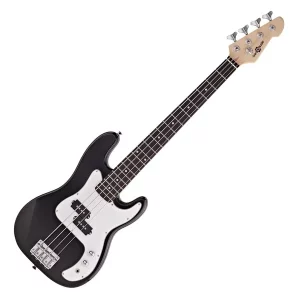
Genres for bass guitar
- Rock: Creates a driving and powerful sound.
- Funk: Infectious bass lines.
- Jazz: Important role in improvisation.
- Soul: Deep, sensual bass lines.
- Pop: Simple but memorable bass lines.
- Electronic music: Creating powerful effects.
Bass Guitar Sizes
- 4/4: Full-size bass guitar.
- 3/4: Smaller bass guitar.
- 1/2: Compact bass guitar.
Bass Guitar Features
- Four strings: Tuned an octave lower.
- Thick strings: Creates low frequencies.
- Sounders: Magnetic pickups.
- Fret: Smaller fret on the fingerboard.
7-string guitar
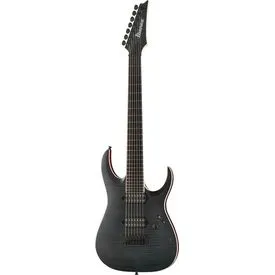
Genres for the 7-string guitar
- Metal: For powerful, low-frequency riffs.
- Progressive rock: Creating complex compositions.
- Jazz: Experimenting with sound.
- Avant-garde music: Finding new sound solutions.
- Pop: Adding depth and expression.
Sizes of 7-string guitars
- 4/4: Full size guitar.
- 3/4: A smaller guitar.
- 1/2: Compact guitar.
Features of a 7-string guitar
- Seven strings: Expanded range.
- String Thickness: Provides a powerful sound.
- Sounders: Different configurations for different effects.
12-string guitar
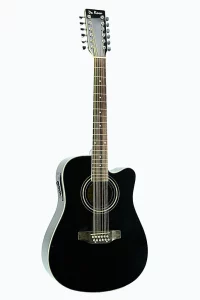
Genres for 12-string guitar
- Folk: Creates atmosphere and depth.
- Blues: Expressiveness and deep emotion.
- Rock: Atmospheric compositions.
- Pop: Add volume and expressiveness.
- Instrumental Music: Solo compositions.
Sizes of 12-string guitars
- 4/4: Full size guitar.
- 3/4: Smaller guitar.
- 1/2: Compact guitar.
Features of a 12-string guitar
- Twelve Strings: Pairing of strings.
- Extended Range: An octave wider.
- String thickness: More powerful sound.
- Sounders: Different configurations.
- Mouthpiece: Wider for additional strings.
Conclusion
The world of guitars is incredibly diverse, and each type of guitar has its own unique aesthetic, sound, and history. Whatever your preference, the guitar will remain a timeless symbol of passion, creativity and inspiration, ready to embrace you and guide you on your journey to musical heights.
-
In what genre is the resonator guitar most commonly used?
The resonator guitar is an instrument primarily associated with the blues, but is in demand in other genres as well.
-
What guitars does an electroacoustic guitar look like?
The electro-acoustic guitar combines features of classical and electric guitars.
-
In what genre is the electric guitar most commonly used?
The electric guitar is the symbol of rebellion and freedom of rock and roll.
